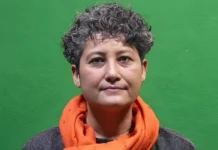Monday Musing
[ Amar Sangno ]
Teachers are often revered and respected for shaping young minds, guiding and mentoring students to navigate academic and personal challenges, and inspiring and motivating them. As the Chinese proverb goes, When you teach someone, both teacher and student benefit. Schools are where teachers cultivate young minds into intellectual independence, nurture dissenting voices, and lay the foundation for the nation’s future generations.
Many teachers in Arunachal Pradesh remain ‘elusive’ and have never set foot in a classroom or taught students since joining the department. Instead, they are merely drawing salaries from their parent department while serving in non-human resource departments.
Some teachers in Arunachal seem to be born privileged, regardless of their public or private status. They remain elusive, often detouring from their primary duties in the classroom, which is what they were recruited for. These privileged teachers often manage to get attached to deputy resident commissioner offices in New Delhi, Kolkata, Guwahati, Shillong, and Mohanbari, or work as personal staffer or officer on special duty to ministers and MLAs.
As per the data presented in the ‘3-year roadmap for Mission Shikshit Arunachal 2029’ by Education Minister Pasang Dorjee Sona in the 4th session of the 8th Legislative Assembly in March, the state’s education system consists of 3,496 schools across 28 districts, with a total enrolment of 2.72 lakh students, and the teaching workforce consists of 23,224 teachers, including 10,011 regular and 5,391 contractual teachers.
According to the Unified District Information System for Education Plus data for 2023-24 from the Ministry of Education, Government of India, Arunachal has a total of 3,490 schools, with 3,23,717 students and 24,700 teachers. The national average pupil-teacher ratio (PTR) is 13, while the average teacher-to-school ratio is 7. This ratio suggests that a surplus number of teachers are employed in the education department, as opposed to the national standard PTR of 30:1 for primary level and 35:1 for upper primary level, as per the Right of Children to Free and Compulsory Education (RTE) Act, 2009.
Unverified data suggest that out of 23,224 teachers, roughly 227 teachers, such as PRTs, TGTs, and PGTs, are engaged and assigned to non-teaching work and administrative roles in the Directorate of School Education and Samagra Shiksha Abhiyan, thus further exacerbating the scarcity of faculty members in the state’s education department. Some of the most critical subject teachers, such as for science, English, and mathematics, are being used as file pushers in administrative work, instead of being given classroom teaching assignments.
Who are these elusive teachers?
They are mostly wives and kith and kin of powerful and influential people, whose kids never studied in government schools. Their deployment in non-teaching works is done through influential people’s desire and recommendation. The deployment is in violation of Section 27 of the RTE Act, which restricts teachers from being assigned non-educational duties, except for census, elections, and disaster response.
Assigning of teachers to non-teaching works is also a violation of the National Education Policy-2020, which emphasises classroom teaching, subject expertise, and professional development.
The teachers striving for non-teaching jobs, wary of their primary classroom job, is a disconcerting shift in the state’s educational landscape, which is having an unsettling effect on the current education system. It is also undermining the fundamental goals of equitable, quality, and inclusive education, and grossly violates the teachers’ deployment norms.
It would be fair to attribute the depletion of quality education to the deviation of teachers to non-teaching works, thus directly impacting on children in the government-run schools, especially in the rural areas. It disrupts foundational learning, and lowers the academic outcomes.
Outlining his 3-year education roadmap, Sona emphasised on four key pillars to revamp the education department. These pillars are: strengthening competency-based learning, enhancing the teacher and system official capacity, improving educational infrastructure, and optimising human resource.
Among these four pillars, equitable, fair, and efficient distribution of human resource across all schools and institutions and 100% transfers through an online computerised system that ensures transparency was the key decision taken by the Education Department.
The onus is on the education minister to decide whether he will revert these elusive teachers back to their parent department with teaching assignments, ensuring that their primary duties are executed fairly, or allow these elusive teachers to remain elusive.



